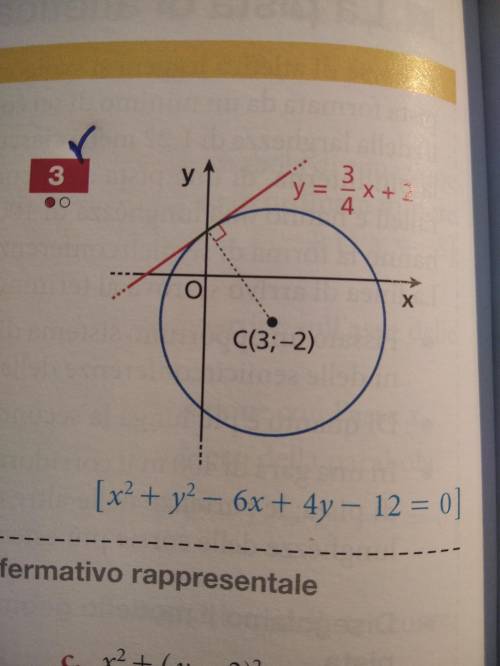
Mathematics, 29.03.2021 14:00 butterflycc
First problem: Draw the triangle whose vertices are the points A (1; 3), B (-3; 3) and the intersection point C of the bisector of the second and fourth quadrant with the line x-y-2 = 0. Find the equation for the circumscribed circle of the triangle. (Solution: x ^ 2 + y ^ 2 + 2x-2y-6 = 0)
Second problem: Two circles are concentric. One has the equation 4x ^ 2 + 4y ^ 2-6x + 8y-23 = 0, the other passes through P (3/4; -2). Find the equation for the second circle. (Solution: 16x ^ 2 + 16y ^ 2-24x + 32y + 9 = 0)
Determine the equation of the following circle:
(attached photo)


Answers: 3


Another question on Mathematics

Mathematics, 21.06.2019 13:00
Which of the following system of equation is not equal to the system of equations is not equal to the system of equations shown below
Answers: 3

Mathematics, 21.06.2019 14:30
Which interval for the graphed function contains the local maximum? [–3, –2] [–2, 0] [0, 2] [2, 4]
Answers: 2

Mathematics, 21.06.2019 18:30
Ill mark the brainliest if you me with the these three questions 7,8,9
Answers: 2

Mathematics, 21.06.2019 19:30
The standard deviation for a set of data is 5.5. the mean is 265. what is the margin of error?
Answers: 3
You know the right answer?
First problem: Draw the triangle whose vertices are the points A (1; 3), B (-3; 3) and the intersect...
Questions



Computers and Technology, 14.12.2020 18:00

Chemistry, 14.12.2020 18:00








Social Studies, 14.12.2020 18:00


English, 14.12.2020 18:00


Mathematics, 14.12.2020 18:00

Mathematics, 14.12.2020 18:00

Mathematics, 14.12.2020 18:00

Mathematics, 14.12.2020 18:00

English, 14.12.2020 18:00



